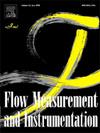Enhancing accuracy in X-ray radiation-based multiphase flow meters: Integration of grey wolf optimization and MLP neural networks
IF 2.3
3区 工程技术
Q2 ENGINEERING, MECHANICAL
引用次数: 0
Abstract
This research investigates the development of an advanced predictive model aimed at accurately determining the volumetric percentages of water, oil, and gas within oil pipeline systems. Utilizing an innovative approach that incorporates an X-ray source alongside two sodium iodide detectors, the study leverages the Monte Carlo N-Particle (MCNP) simulation code to model the behavior of three-phase fluids under varied conditions. The model meticulously simulates various volumetric configurations of water, oil, and gas, resulting in a comprehensive dataset that provides key spectral information. The initial phase involved the extraction of ten temporal and frequency-related features from each detector, culminating in a pool of twenty features. The analytical process then applied the Grey Wolf Optimization (GWO) algorithm to select the most indicative features for predictive modeling. Out of the initial set, seven features—short-time energy, frequency deviation, relative spectral density, spectral margin, main peak position, spectral coefficient, and frequency intensity—were identified as critical for enhancing model accuracy. These features were subsequently fed into a meticulously structured multilayer perceptron (MLP) neural network. This network, designed with two hidden layers containing 20 and 10 neurons, respectively, demonstrated exceptional capability, achieving a root mean square error (RMSE) of less than 0.06 in the prediction of oil and gas volumetric percentages. The study emphasizes the significant impact of integrating refined feature selection techniques and robust neural network architectures on the precision and reliability of volumetric predictions in multiphase flow systems within oil pipelines. This approach not only enhances predictive accuracy but also contributes to more efficient resource management and operational planning in the oil and gas industry.
提高基于 X 射线辐射的多相流量计的精度:灰狼优化与 MLP 神经网络的整合
这项研究旨在开发一种先进的预测模型,以准确确定石油管道系统中水、油和气的体积百分比。研究采用了一种创新方法,将 X 射线源与两个碘化钠探测器结合在一起,利用蒙特卡罗 N 粒子(MCNP)模拟代码来模拟三相流体在不同条件下的行为。该模型细致地模拟了水、石油和天然气的各种体积配置,从而产生了一个提供关键光谱信息的综合数据集。初始阶段需要从每个探测器中提取十个与时间和频率相关的特征,最终形成一个由二十个特征组成的特征库。然后,分析过程采用灰狼优化(GWO)算法,为预测建模选择最具指示性的特征。在最初的特征集中,七个特征--短时能量、频率偏差、相对频谱密度、频谱余量、主峰位置、频谱系数和频率强度--被确定为提高模型准确性的关键特征。这些特征随后被输入到一个结构严谨的多层感知器(MLP)神经网络中。该网络设计了两个分别包含 20 个和 10 个神经元的隐藏层,在预测石油和天然气体积百分比方面表现出卓越的能力,均方根误差 (RMSE) 小于 0.06。这项研究强调了集成精细特征选择技术和稳健神经网络架构对石油管道内多相流系统体积预测精度和可靠性的重要影响。这种方法不仅能提高预测精度,还有助于提高石油天然气行业资源管理和运营规划的效率。
本文章由计算机程序翻译,如有差异,请以英文原文为准。
求助全文
约1分钟内获得全文
求助全文
来源期刊

Flow Measurement and Instrumentation
工程技术-工程:机械
CiteScore
4.30
自引率
13.60%
发文量
123
审稿时长
6 months
期刊介绍:
Flow Measurement and Instrumentation is dedicated to disseminating the latest research results on all aspects of flow measurement, in both closed conduits and open channels. The design of flow measurement systems involves a wide variety of multidisciplinary activities including modelling the flow sensor, the fluid flow and the sensor/fluid interactions through the use of computation techniques; the development of advanced transducer systems and their associated signal processing and the laboratory and field assessment of the overall system under ideal and disturbed conditions.
FMI is the essential forum for critical information exchange, and contributions are particularly encouraged in the following areas of interest:
Modelling: the application of mathematical and computational modelling to the interaction of fluid dynamics with flowmeters, including flowmeter behaviour, improved flowmeter design and installation problems. Application of CAD/CAE techniques to flowmeter modelling are eligible.
Design and development: the detailed design of the flowmeter head and/or signal processing aspects of novel flowmeters. Emphasis is given to papers identifying new sensor configurations, multisensor flow measurement systems, non-intrusive flow metering techniques and the application of microelectronic techniques in smart or intelligent systems.
Calibration techniques: including descriptions of new or existing calibration facilities and techniques, calibration data from different flowmeter types, and calibration intercomparison data from different laboratories.
Installation effect data: dealing with the effects of non-ideal flow conditions on flowmeters. Papers combining a theoretical understanding of flowmeter behaviour with experimental work are particularly welcome.
 求助内容:
求助内容: 应助结果提醒方式:
应助结果提醒方式:


